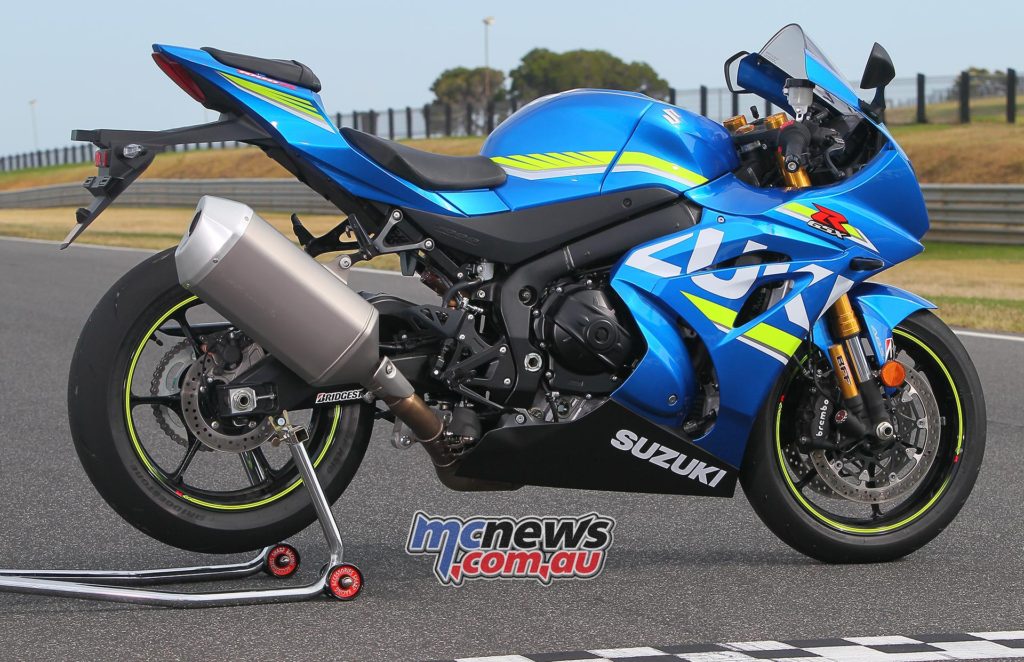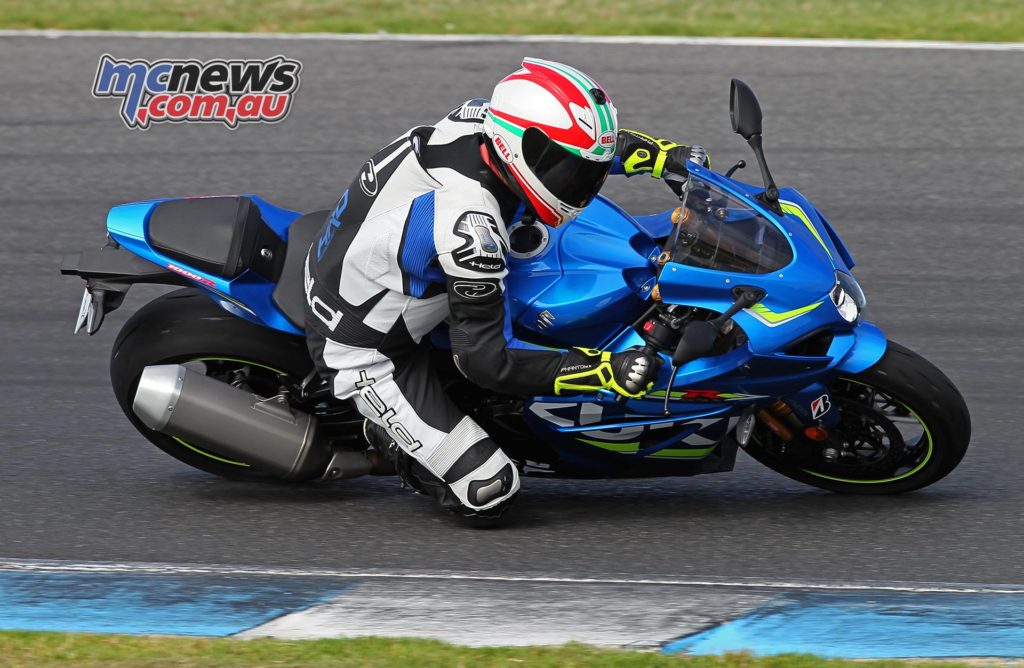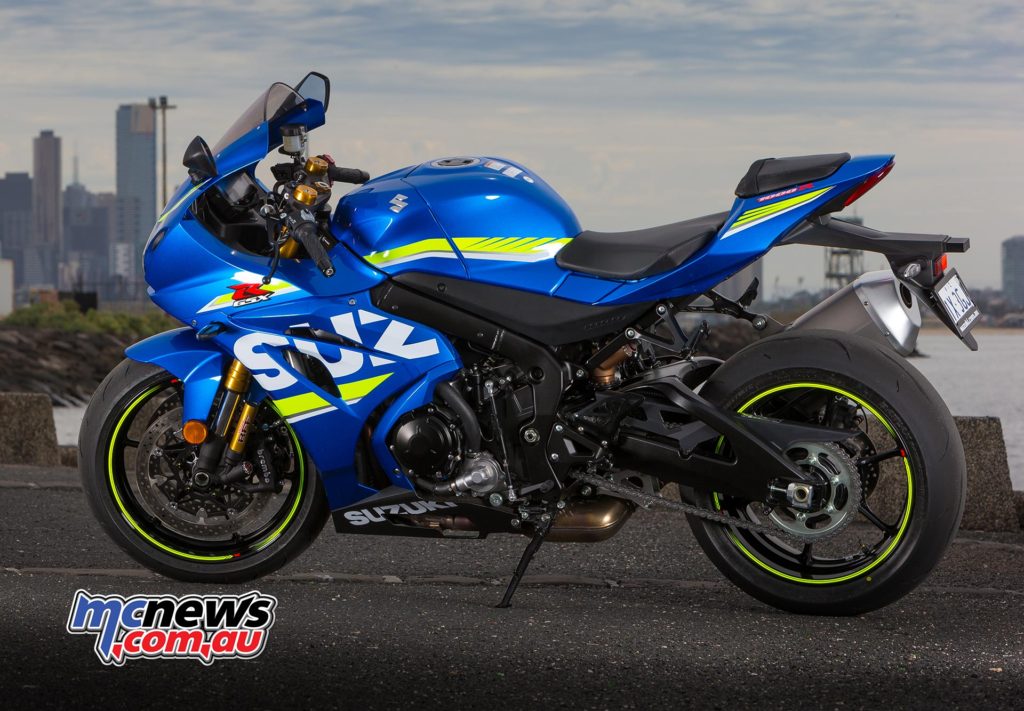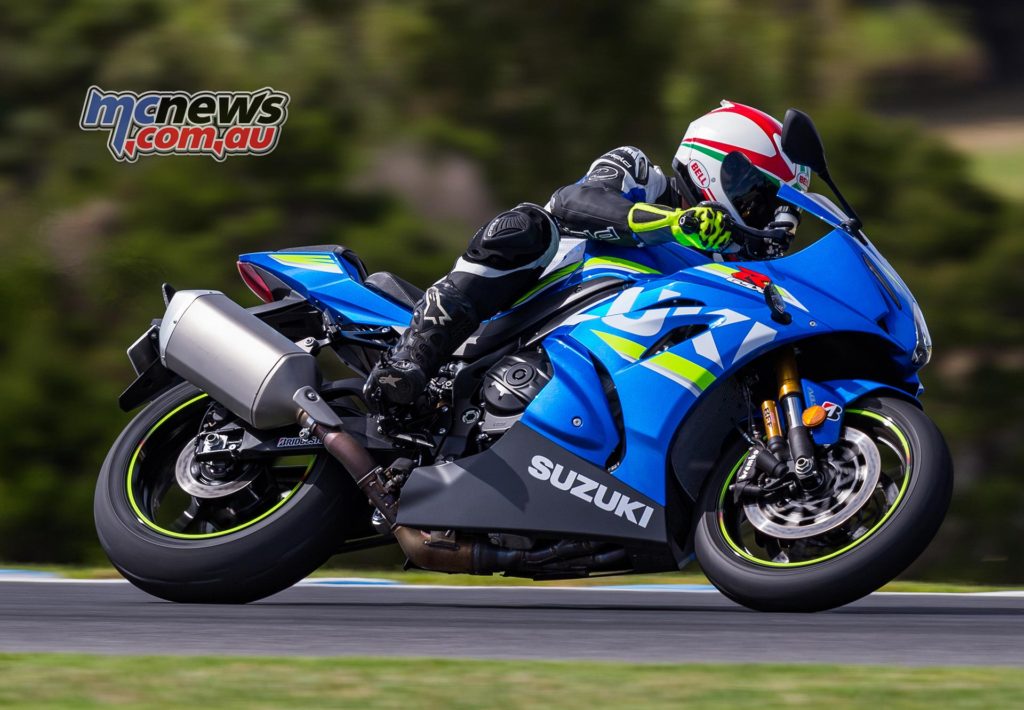2017 Suzuki GSX-R1000R Test Page Five
My only real complaint over the whole day was in fast changes of direction. While the suspension, in the form of Showa Balance Free Forks and Balance Free Lite rear shock, is compliant with the bumps, it feels like it is a little low in the stroke on the fast changes.
This makes the bike a little lazy to get from left to right under load. However, I am sure with a slightly heavier spring this bike at the race track could quite easily overcome my only complaint!

From a comfort prospective the new generation of GSX-R1000R feels to be aimed slightly more towards the sports rider and the track than the last model. The riding position is slightly more aggressive, and seat to foot-peg length feels slightly shorter, and body position a little racier.
The GSX-R1000R is still not as cramped and forward biased as some of the competitor’s litre bikes, but is definitely a change from the previous version, which, for a sportsbike, was a veritable armchair for long days in the saddle.
I wont go into depth about how Suzuki has managed to produce an engine that has such good smooth low- and mid-range power, while still maintaining that linear curve through the rev range. Needless to say a lot of that character is helped by the Suzuki Racing Variable Valve Timing (SR-VVT) system developed in MotoGP racing.

The power is impressive, without being overwhelming, and the GSX-R1000R feels a little short on maximum horsepower compared to the BMW S 1000 RR, but is a lot smoother through its delivery than the current World Superbike dominating Kawasaki ZX-10R. The Kawasaki has great mid-range horsepower, but doesn’t feel as refined as the Suzuki in the way it is able to put that power through the rear rubber.
I also found at speed that the instrument panel was slightly difficult to read on track, with the top rpm bar hard to just glance at and ascertain just how many revs the bike was doing. There is plenty of information available on the dash, however, I just found it a little bit cluttered.
The GSX-R1000R also has inbuilt launch control and although we were not privileged to try it, we got to see a demo by the Suzuki test rider. I did a practice start out of the pits without the assistance of the launch control and I felt the clutch gave a nice soft feel without any jerkiness.

The clutch does feel incredibly light for a sportsbike but I am guessing this is all tied in with the slipper clutch, and assists the bi-directional quick shifting unit.
In summary, Suzuki is back to their motto, “Own the racetrack” and this is by far the best sportsbike Suzuki has offered in over a decade, when compared to its contemporaries of the day. Although we are not likely to see units of the GSX-R1000R before June, over the coming season I am sure Suzuki will be back winning races both domestically and at the world championship level.
For me the standout feature is the bi-directional quickshift. It is just exceptional and a game changer for riders from a road background, right through to a track day guru, or full on racer nut.

The engine has an enormous amount of low- to mid-range power that then continues in a linear fashion right through to red -ine. The electronics package is the most advanced I have seen on a Suzuki, and there are plenty of options and modes to suit a rider of all levels. The chassis offers good overall feel and with a few tweaks to the suspension this could be exceptional.
The estimated pricing of the 2017 GSX-R1000R is just below $26k, with the standard GSX-R1000 model aroiund $23k, with official pricing to be released in the future. The 2017 Suzuki GSX-R1000R is expected to arrive in Australia around June.























